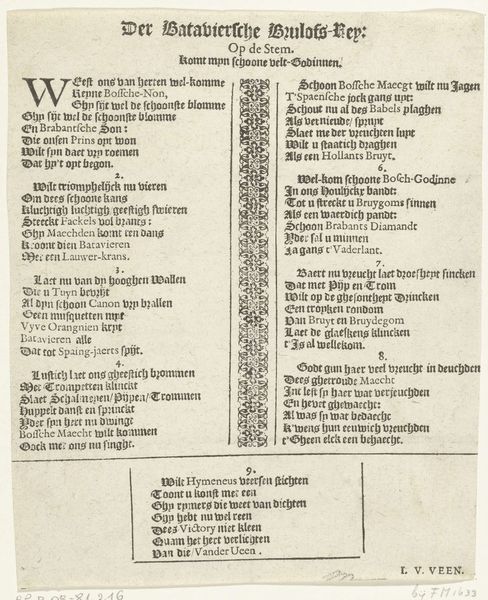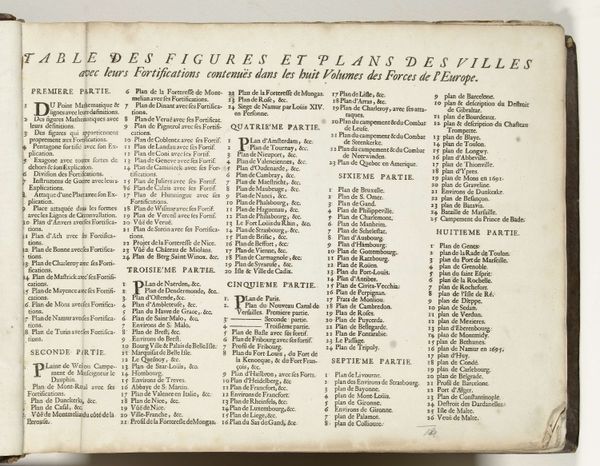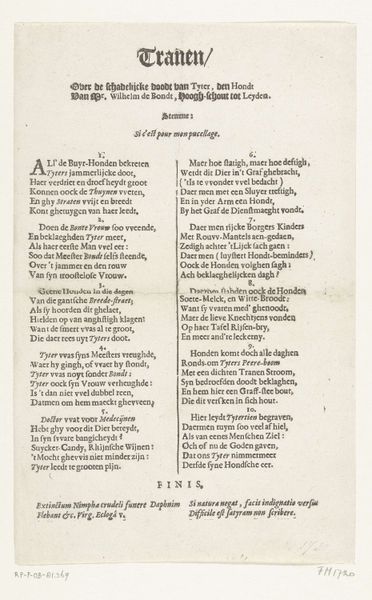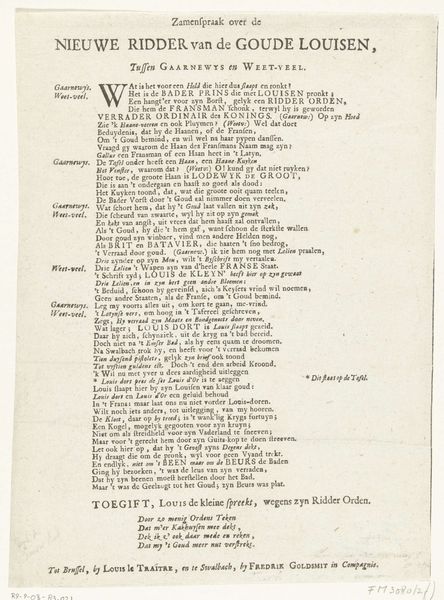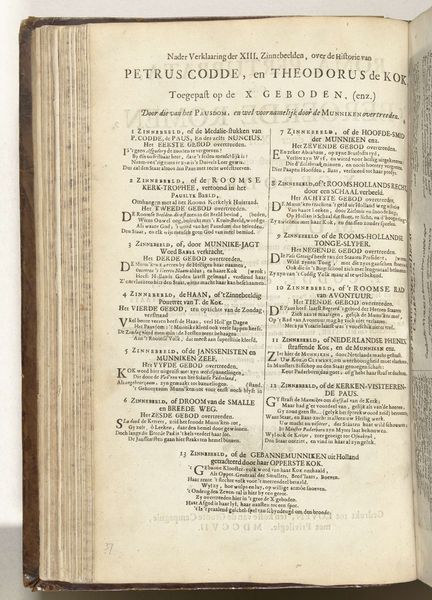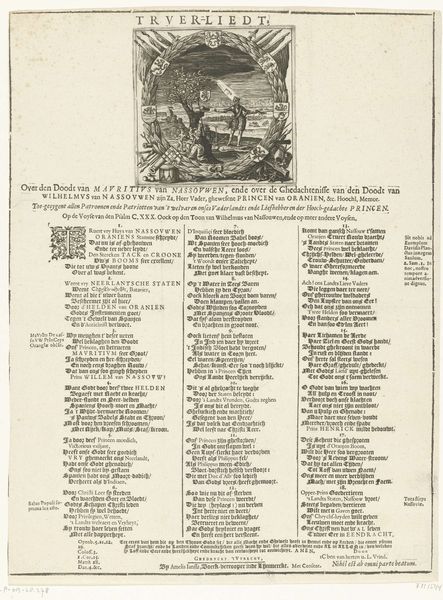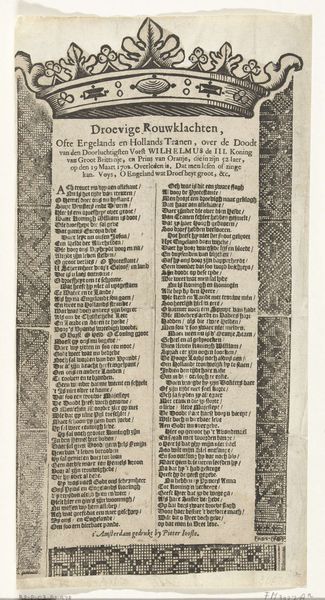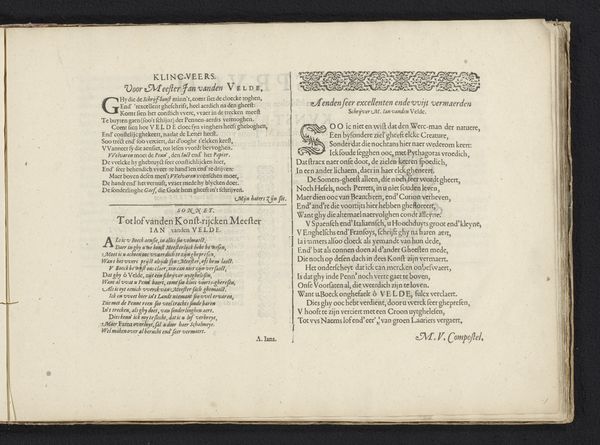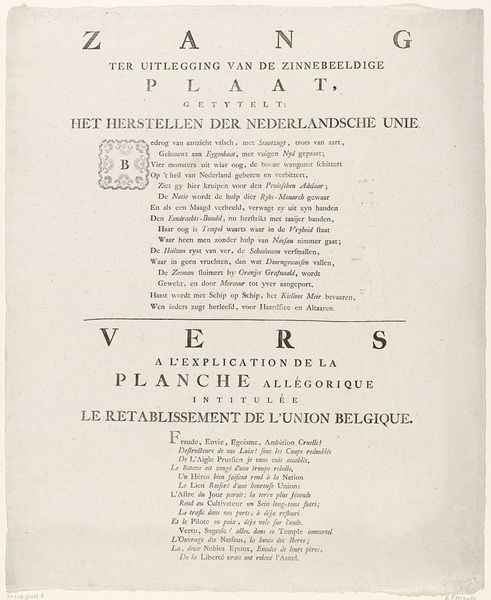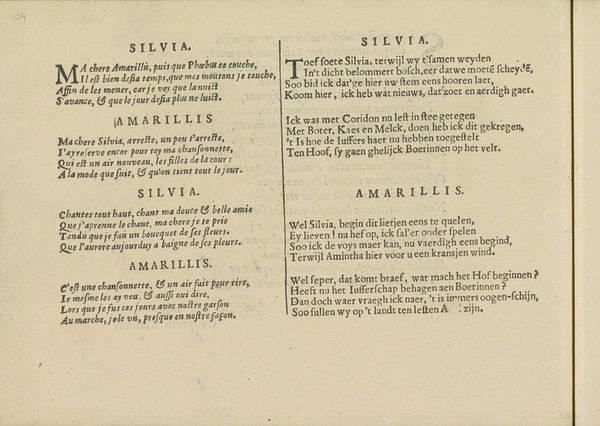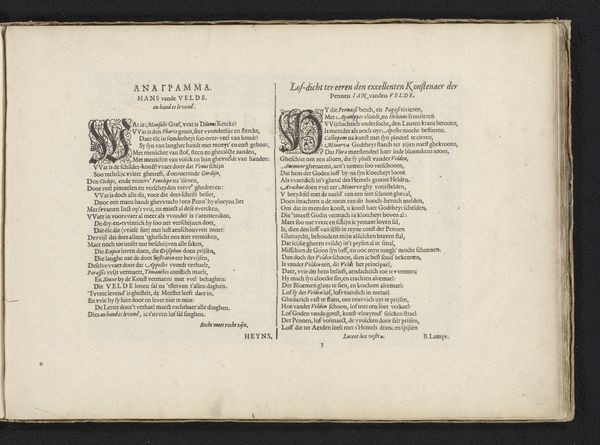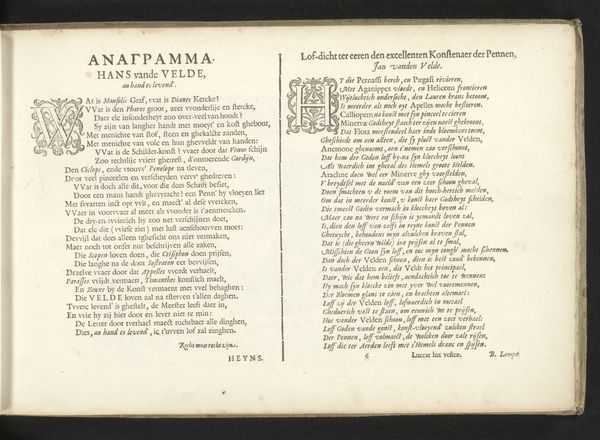
print, textile, paper, typography
# print
#
textile
#
paper
#
typography
Dimensions: height 295 mm, width 370 mm
Copyright: Rijks Museum: Open Domain
Editor: This is "Register" by Jan Philipsz Schabaelje, created around 1653 or 1654. It looks like a page from a book, a print on paper, featuring a lot of dense text and what seems like an index. It's quite imposing with all the typography. What do you see in this piece, beyond just the surface of an old document? Curator: What immediately strikes me is how this "Register" functions as a tool for organizing knowledge, specifically within a religious framework. Notice the emphasis on "Emblemata Sacra." It’s a visual index, a map of sorts, guiding the reader through a complex system of symbols and narratives. Consider its historical context: 17th-century Europe was grappling with religious reformation and the rise of scientific thought. Editor: So, it's a way to categorize religious emblems. What purpose would that serve back then? Curator: Exactly. It helped structure and reinforce religious doctrine during a period of intense theological debate. This piece participates in the act of canonizing religious narratives. Ask yourself: who had access to this kind of knowledge, and how did this controlled access impact social hierarchies? It's also intriguing how typography itself becomes a medium of power, visually asserting authority and order. How does that make you think about its contemporary relevance? Editor: That’s a lot to consider. I initially saw just an old page, but now I see it as an artifact reflecting the social and intellectual battles of its time. Curator: Indeed. This seemingly simple index reveals the intricate ways in which knowledge, power, and belief were intertwined in 17th-century society. We see a convergence between faith and the rise of printing – both powerful forces at play. What do you take away from this analysis? Editor: That art is a mirror reflecting our history, our beliefs, and our struggles for power and recognition. This Register reminds me that cataloging what exists creates meaning that determines our values and truths.
Comments
No comments
Be the first to comment and join the conversation on the ultimate creative platform.
